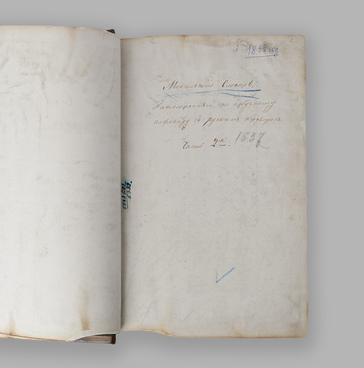“Chinese Grammar — Han Wen Qi Meng (Fundamentals of Written Chinese)” was the first Chinese textbook in the history of Russia. The book was published in 1838 upon the request of the Asian Department of the Ministry of Foreign Affairs.
The “Grammar” by Father Hyacinth (secular name Nikita Yakovlevich Bichurin) presents general information about the Chinese language, syllable structure, Chinese characters, phonetics, the sound system, the styles of writing hieroglyphs, and the conventions for writing foreign words.
Each chapter is followed by comments which explain and clarify the differences, ambiguities, rules, and exceptions. The “Grammar” consists of 2 parts, each with 12 chapters. Part 1 describes the basic concepts of Chinese language and writing. The topics include different types of writing Chinese characters, spelling, punctuation, tones, and handwriting.
In Part 2, Father Hyacinth explored the grammar of the Chinese language. He described the grammatical forms of words in Chinese, the parts of speech, and the use of “full words” and “empty words”.
The second half of the textbook contains ten tables. They show the writing of complex characters, six scripts, characters mistaken for other characters, new characters used instead of ancient ones, and the spelling of Chinese sounds in Russian with accents. The tables indicate how Chinese sounds are converted into the French, Portuguese, and English alphabets. The book also focuses on the writing of radicals, numerals, and polite expressions which are used in conversation instead of pronouns. At the end of the textbook, there are short bilingual dictionaries.
Father
Hyacinth’s “Chinese Grammar” is distinguished by the fact that it was created
for teaching Chinese at the Kyakhta College, the first educational institution
in the Russian Empire to teach this subject. This is evidenced by the content
of glossaries at the end of the book which include the names of Russian and
Chinese goods sold in Kyakhta, and the names of tea varieties.


